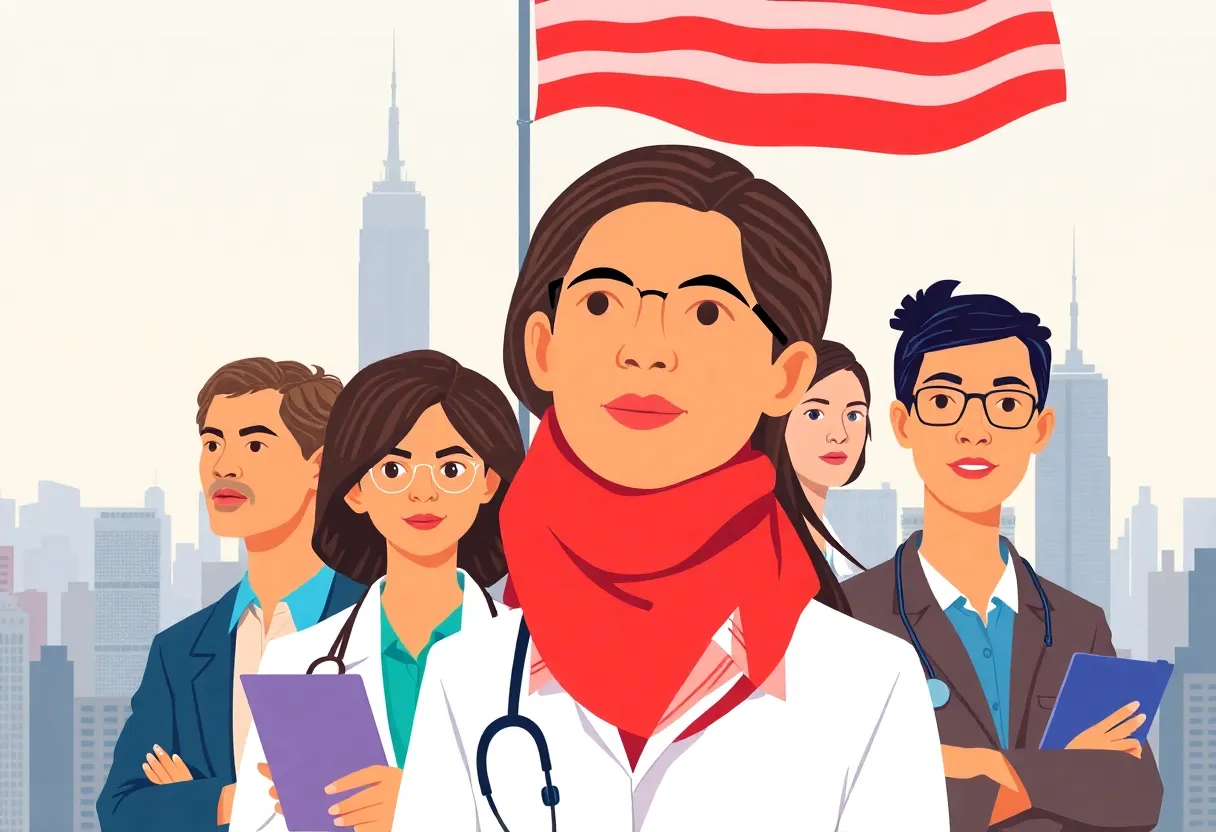News Summary
A recent report indicates New York’s public schools are falling behind in computer science education, with only 52% of high schools offering these crucial courses. The disparity is stark between suburban and urban schools, where access is severely lacking. Moreover, with a 32% growth in the tech sector, the demand for computer skills is skyrocketing, highlighting the urgency for educational reforms. Recommendations include mandatory computer science classes across K-12 and improved teacher training to equip students for the growing tech job market.
New York City – A recent report from the Center for an Urban Future indicates that New York’s public schools are falling significantly behind in providing essential computer science education, even as the tech sector in the state experiences robust growth. The findings show that only 52% of public high schools in New York offer foundational computer science courses, which is notably lower than the national average of 60%.
The report reveals a stark educational divide in access to computer science education based on geographic location. Suburban schools lead with 79% offering computer classes, whereas urban and rural districts lag behind at just 45%. Alarmingly, cities like Syracuse do not have any public high schools that provide foundational computer science courses. Other urban areas reflect similarly poor statistics, including 40% in Rochester, 33% in Mount Vernon, and just 25% in Yonkers, illustrating a critical gap in resources and accessibility.
As only 4.8% of public high school students are currently enrolled in foundational computer science courses, experts indicate that an enrollment rate of 25% is essential for students to receive universal exposure to this critical area of education. The data also highlights significant demographic disparities, revealing that among students attending schools with computer science offerings, 57% are Black, 67% are Hispanic, 72% are white, and 85% are Asian. Notably, girls make up only about 33% of computer science students in New York, further emphasizing the need for targeted initiatives to increase inclusivity in technical fields.
The report underscores the urgency of addressing these educational deficiencies as New York’s tech sector has witnessed a remarkable 32% growth over the past decade, outpacing the overall economic growth by nearly five times. As of 2024, more than 37% of job postings in New York—approximately 570,000 positions—demand technology skills, showcasing a 120% increase in such job requirements since 2010. Without a sufficient pipeline of skilled workers, experts warn that job openings may be filled by professionals from other states, exacerbating the local talent shortage.
To bridge these educational gaps and prepare students for future opportunities, the report advocates for several key recommendations. Among these, the state should mandate that all K-12 schools offer computer science classes, which would provide foundational skills critical for a wide array of careers. The report also calls for the establishment of pre-service training programs for teachers focused on computer education, ensuring that educators are adequately prepared to teach these essential skills. Furthermore, it proposes the appointment of a state-level director of computing education to oversee and facilitate the integration of computer science into the curriculum across the state.
In addition to coding skills, the report emphasizes the importance of teaching computational thinking, which transcends programming to include problem-solving and evaluating results. This type of education is not only vital for careers in technology but is increasingly relevant across various fields in today’s job market.
In summary, the current state of computer science education in New York public schools presents a worrying trend, particularly given the growing demand for tech skills in the job market. Without significant improvements and guarantees of equitable access to computer science education, students in New York risk falling behind in an increasingly tech-driven world.
Deeper Dive: News & Info About This Topic
HERE Resources
New Study Reveals Heart Age Disparities Among U.S. Adults
Educational Reform Leads By Socialism in NYC
New York Appoints Its First Chief AI Officer
New York City Faces Technical Disruptions During Testing
New York City Launches Ph.D. Program in Chemistry
New York Institute of Technology Launches Chemistry Ph.D. Program
Additional Resources
- News10: NY Schools Lag in Tech Skills
- Wikipedia: Computer Science Education
- New York Times: Computer Science Education and AI
- Google Search: Computer Science Education
- lohud: NY Grades 3-8 Tests Disrupted
- Encyclopedia Britannica: Computer Science
- CNY Central: NY Schools Trouble Accessing Testing System
- Google Scholar: Computer Science Education in New York
- GovTech: NY State to Require Credentials for Computer Science Teachers
- Google News: New York Tech Education
Author: STAFF HERE NEW YORK WRITER
The NEW YORK STAFF WRITER represents the experienced team at HERENewYork.com, your go-to source for actionable local news and information in New York, the five boroughs, and beyond. Specializing in "news you can use," we cover essential topics like product reviews for personal and business needs, local business directories, politics, real estate trends, neighborhood insights, and state news affecting the area—with deep expertise drawn from years of dedicated reporting and strong community input, including local press releases and business updates. We deliver top reporting on high-value events such as New York Fashion Week, Macy's Thanksgiving Day Parade, and Tribeca Film Festival. Our coverage extends to key organizations like the Greater New York Chamber of Commerce and United Way of New York, plus leading businesses in finance and media that power the local economy such as JPMorgan Chase, Goldman Sachs, and Bloomberg. As part of the broader HERE network, including HEREBuffalo.com, we provide comprehensive, credible insights into New York's dynamic landscape.





